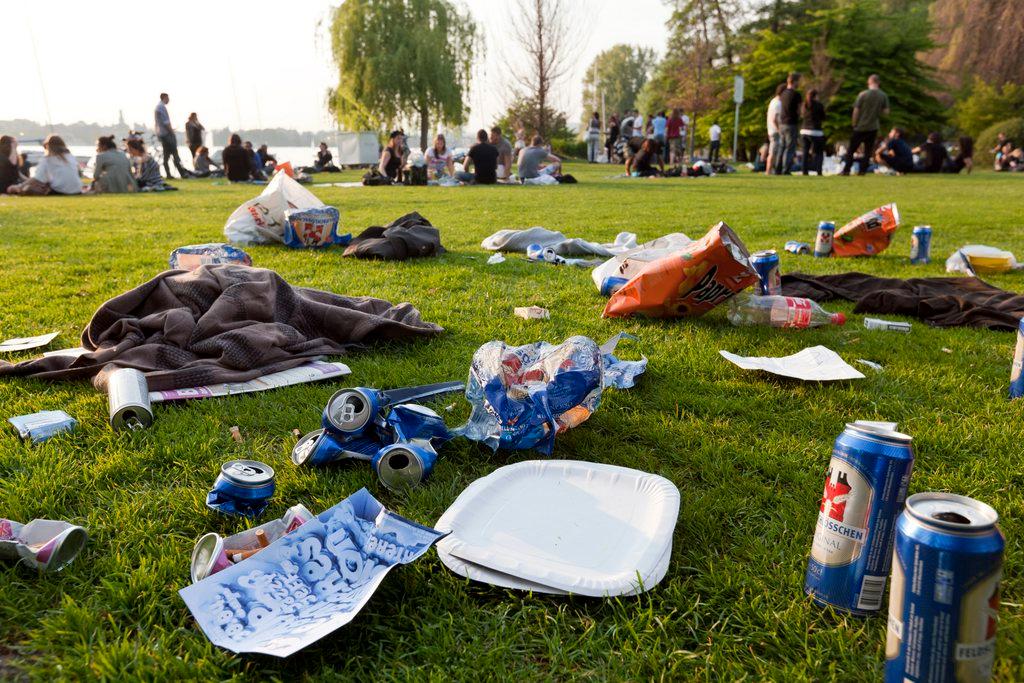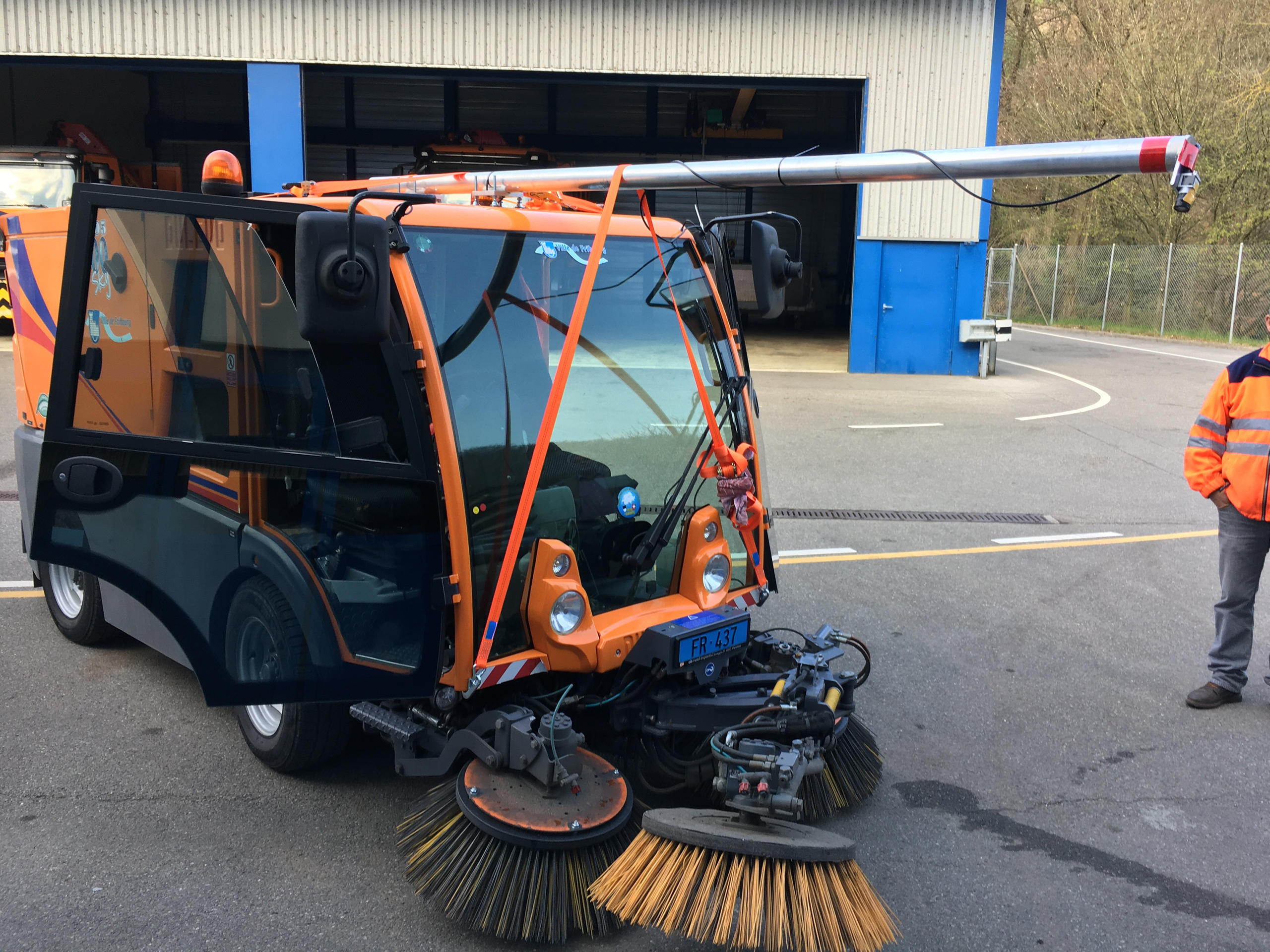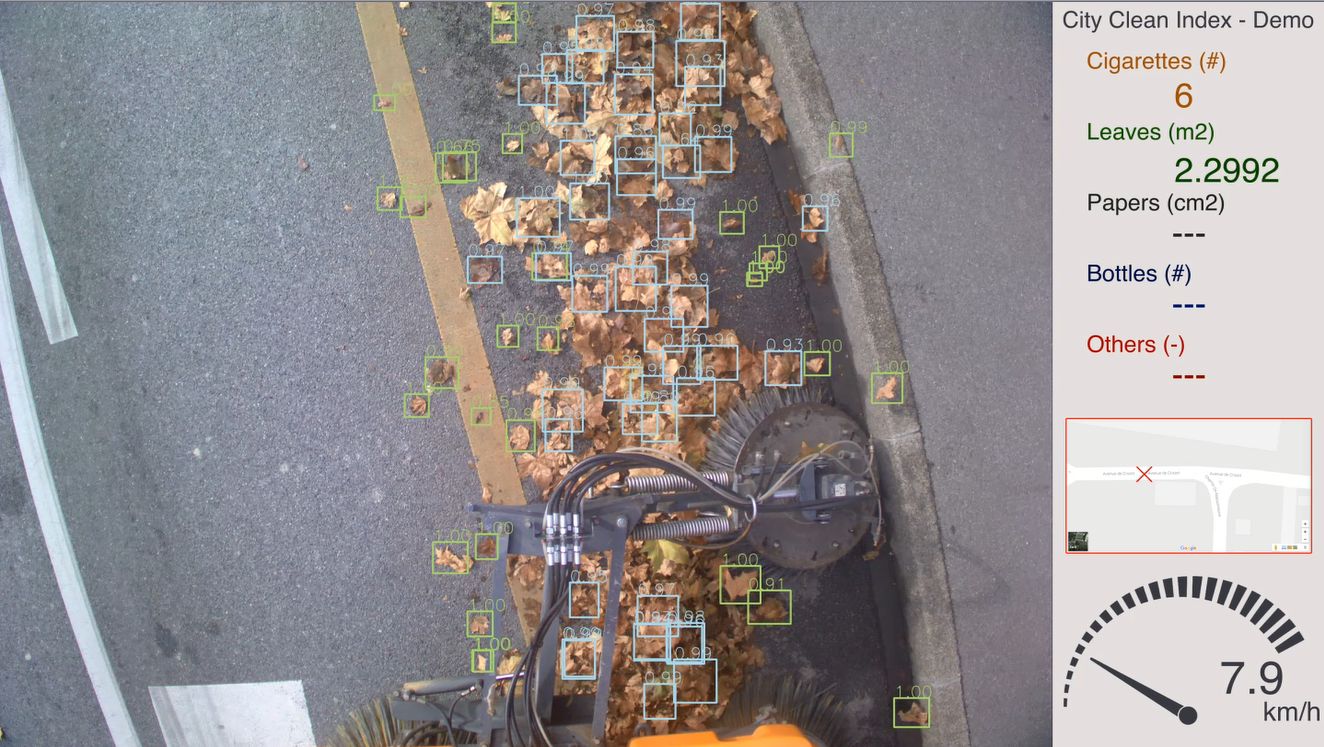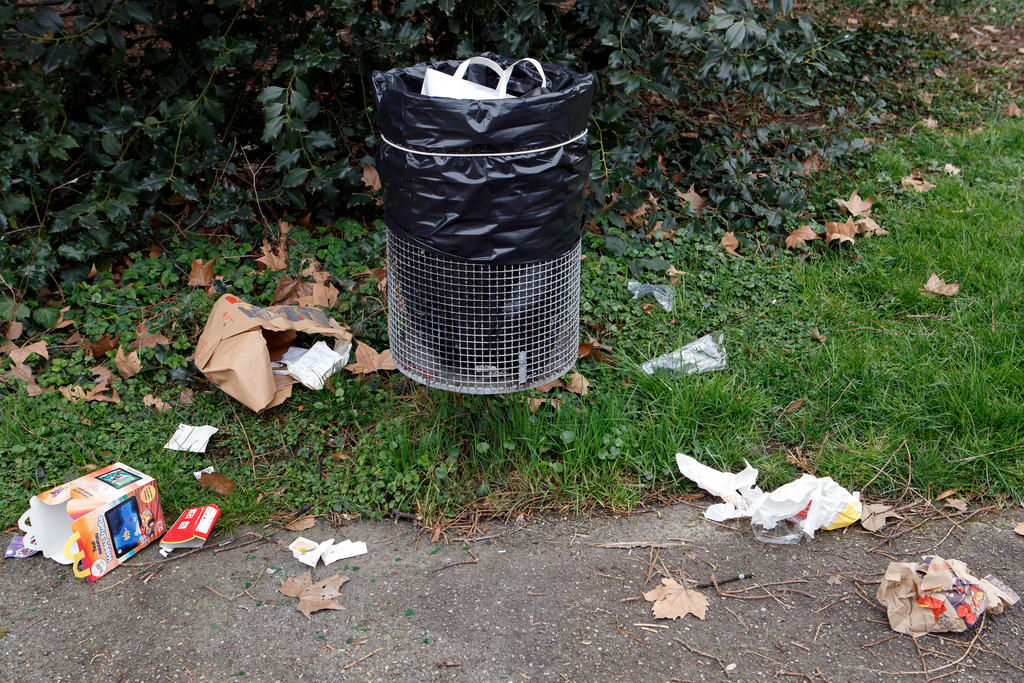
Swiss cities: How clean is clean enough?

If you think Swiss streets are clean, meet the digital system that could make them even cleaner by counting and categorising different types of trash, paving the road for cheaper and more efficient urban sanitation both in Switzerland and abroad.
Even in stereotypically tidy Switzerland, managing urban waste is not just a logistical burden – it’s also a strategic challenge. In the absence of a standard measure of cleanliness, Swiss cities must each work out their own approach to deciding how much time and money to invest in sanitation, and where.

Authorities in the city of Zurich, for example, rely on inspections of streets carried out on foot. But this kind of approach is costly and time-consuming, and its subjectivity still leaves open the question: how clean is clean enough?
Mohammad Saeed Rad and his colleagues in the Signal Processing Laboratory External link5 (LTS5) at the Swiss Federal Institute of Technology in Lausanne (EPFL) have partnered with a local start-up, Cortexia, as well as the Haute Ecole ArcExternal link (HE-Arc) university to pilot a technology that could finally answer that question.
“In any domain, if you can’t measure it, you can’t manage it,” Rad tells swissinfo.ch.
“For example, in this room, if you want it colder or warmer, you need to know the temperature; otherwise, your decision will be based on your opinion. It’s the same for a city street: maybe for someone from another country, the street is clean, but for a Swiss person, it’s not. If you want to work objectively, you should have a measurement – that is the idea behind our project.”
It’s a project that has already captured the interest of Swiss cities, as having a clear indicator of what sanitation resources are needed in which city sectors has great potential to help authorities target their clean-up efforts, saving both time and money. Engineers at the Neuchâtel-based university are developing a user interface and mobile app for the system, while the start-up near Vevey has partnered with the city of Zurich to pilot the technology and learn what specifications sanitation officials require.

More
A computer programme for cleaner cities
Computer litter-acy
The LTS5’s system, which they presented at the 2017 International Conference on Computer Vision SystemsExternal link in China, looks quite simple: it consists of a video camera connected to a laptop. But the computer runs a sophisticated machine-learning algorithm designed to automatically detect up to 40 different categories of waste as small as two centimetres (0.8 inches) in size.
The whole apparatus can be mounted onto the exterior of a slow-moving vehicle like a bicycle or a street sweeper, where it captures images of litter, analyses the images, and transmits information about the state of the streets back to the user.
Rad explains that there are two major challenges to developing such a system: detecting and identifying every bit of trash lying on the road at a speed of up to 20 kilometres per hour (12.4 miles per hour) – from cigarette butts to bottles, chewing gum, cans and newspapers – and accurately counting how many of each type there are without any duplications
For this computer programme, practice makes perfect: the more images of trash the system processes, the more accurate it becomes.
“It learns exactly the same way that human brains learn: by experience,” Rad says.
“After the ten-thousandth image the computer processes, most probably it will guess correctly. After one year, the system would work much better than it does now just because we would have more training examples.”
Of equal importance are objects on the ground that are not trash – leaves, for example – which the system must be able to distinguish from man-made litter. The EPFL researchers are also working on ‘teaching’ the system to spot city waste receptacles, and note whether or not they appear to be full.

More
What does it take to keep Swiss streets so clean?
A standardised score
The information about waste type, number and location gathered by the system can be used to calculate a value called the Clean City IndexExternal link, which is being developed by Cortexia in collaboration with EPFL and HE-Arc.
The project participants therefore hope that the Clean City Index will yield environmental and economic benefits in Switzerland and abroad by providing an objective understanding of urban cleanliness…and helping cities to use time and finances more efficiently when it comes to cleaning up.
“This index can help you decide whether to clean a given street or not, or whether to clean it three times per day versus once every two weeks. These are decisions that cost cities money,” Rad says.
So far, tests have been carried out using street sweepers in Geneva and Fribourg, a bike in Zurich, and cars in Lausanne. The researchers have even taken the system for a spin on streets of Marseilles in France.
“There is a need for an automatic system, whether in Switzerland, France or any other country. That could also give you the chance to compare the cleanliness of your city to others,” Rad says.
Going forward, project goals include improving the ability of system to ignore duplicate images, and potentially piloting the system on city buses, which travel at a suitable speed for the camera… and which conveniently frequent some of cities’ most litter-prone areas: bus stops.
In the meantime, most of the work lies in providing the system with as many images of different types of litter as possible to help it master its job.
Rad says that while some types of litter are common enough to provide the system with the images it needs (like cigarettes) others are fewer and far between.
“The bottleneck is getting enough images of different kinds of trash. We have a couple of tricks: we use rubbish from the landfill, and we create synthetic images that don’t exist in the real world to help train the system,” explains Rad.

In compliance with the JTI standards
More: SWI swissinfo.ch certified by the Journalism Trust Initiative
















![The four-metre-long painting "Sonntag der Bergbauern" [Sunday of the Mountain Farmers, 1923-24/26] had to be removed by a crane from the German Chancellery in Berlin for the exhibition in Bern.](https://www.swissinfo.ch/content/wp-content/uploads/sites/13/2025/12/01_Pressebild_KirchnerxKirchner.jpg?ver=cb688ed5)















You can find an overview of ongoing debates with our journalists here . Please join us!
If you want to start a conversation about a topic raised in this article or want to report factual errors, email us at english@swissinfo.ch.